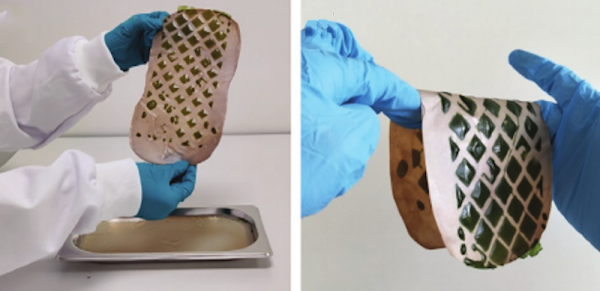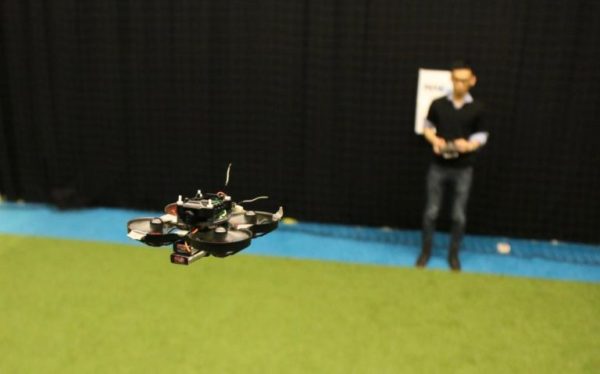Recently the MAVLab (Micro Air Vehicle Laboratory) at the Technical University of Delft in the Netherlands proudly proclaimed having made an autonomic drone that’s a mere 72 grams in weight. The best part? It’s designed to take part in drone races. What this means is that using a single camera and onboard processing, this little drone with a diameter of 10 centimeters has to navigate the course, while avoiding obstacles.
To achieve this goal, they took an Eachine trashcan drone, replacing its camera with an open source JeVois smart machine vision camera and the autopilot software with the Paparazzi open UAV software. Naturally, scaling a racing drone down to this size came at an obvious cost: with its low-quality sensors, relatively low-quality camera and limited processing power compared to its big brothers it has to rely strongly on algorithms that compensate for drift and other glitches while racing.
Currently the drone is mainly being tested at a four-gate race track at TU Delft’s Cyberzoo, where it can fly multiple laps at a leisurely two meters per second, using its gate-detecting algorithms to zip from gate to gate. By using machine vision to do the gate detection, the drone can deal with gates being displaced from their position indicated on the course map.
While competitive with other, much larger autonomous racing drones, the system is still far removed from the performance of human-controlled racing drones. To close this gap, MAVLab’s [Christophe De Wagter] mentions that they’re looking at improving the algorithms to make them better at predictive control and state estimation, as well as the machine vision side. Ideally these little drones should be able to be far more nimble and quick than they are today.
See a video of the drone in action after the link.
Continue reading “Making Autonomous Racing Drones Lean And Mean” →













